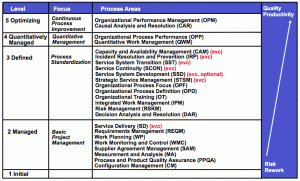Warning: Illegal string offset 'title' in /usr/www/users/playsn/pibold/wp-content/plugins/table-of-content/plugin.php on line 48
Warning: Cannot assign an empty string to a string offset in /usr/www/users/playsn/pibold/wp-content/plugins/table-of-content/plugin.php on line 48
Warning: Illegal string offset 'title-tag' in /usr/www/users/playsn/pibold/wp-content/plugins/table-of-content/plugin.php on line 50
Warning: Illegal string offset 'title-tag' in /usr/www/users/playsn/pibold/wp-content/plugins/table-of-content/plugin.php on line 52
Warning: DOMDocument::loadXML(): Opening and ending tag mismatch: hr line 5 and body in Entity, line: 6 in /usr/www/users/playsn/pibold/wp-content/plugins/wordpress-amazon-associate/APaPi/AmazonProduct/Result.php on line 149
Warning: DOMDocument::loadXML(): Opening and ending tag mismatch: body line 5 and html in Entity, line: 7 in /usr/www/users/playsn/pibold/wp-content/plugins/wordpress-amazon-associate/APaPi/AmazonProduct/Result.php on line 149
Warning: DOMDocument::loadXML(): EndTag: '</' not found in Entity, line: 8 in /usr/www/users/playsn/pibold/wp-content/plugins/wordpress-amazon-associate/APaPi/AmazonProduct/Result.php on line 149
Warning: Invalid argument supplied for foreach() in /usr/www/users/playsn/pibold/wp-content/plugins/wordpress-amazon-associate/APaPi/AmazonProduct/Result.php on line 160
Warning: DOMDocument::loadXML(): Opening and ending tag mismatch: hr line 5 and body in Entity, line: 6 in /usr/www/users/playsn/pibold/wp-content/plugins/wordpress-amazon-associate/APaPi/AmazonProduct/Result.php on line 149
Warning: DOMDocument::loadXML(): Opening and ending tag mismatch: body line 5 and html in Entity, line: 7 in /usr/www/users/playsn/pibold/wp-content/plugins/wordpress-amazon-associate/APaPi/AmazonProduct/Result.php on line 149
Warning: DOMDocument::loadXML(): EndTag: '</' not found in Entity, line: 8 in /usr/www/users/playsn/pibold/wp-content/plugins/wordpress-amazon-associate/APaPi/AmazonProduct/Result.php on line 149
Warning: Invalid argument supplied for foreach() in /usr/www/users/playsn/pibold/wp-content/plugins/wordpress-amazon-associate/APaPi/AmazonProduct/Result.php on line 160
Warning: DOMDocument::loadXML(): Opening and ending tag mismatch: hr line 5 and body in Entity, line: 6 in /usr/www/users/playsn/pibold/wp-content/plugins/wordpress-amazon-associate/APaPi/AmazonProduct/Result.php on line 149
Warning: DOMDocument::loadXML(): Opening and ending tag mismatch: body line 5 and html in Entity, line: 7 in /usr/www/users/playsn/pibold/wp-content/plugins/wordpress-amazon-associate/APaPi/AmazonProduct/Result.php on line 149
Warning: DOMDocument::loadXML(): EndTag: '</' not found in Entity, line: 8 in /usr/www/users/playsn/pibold/wp-content/plugins/wordpress-amazon-associate/APaPi/AmazonProduct/Result.php on line 149
Warning: Invalid argument supplied for foreach() in /usr/www/users/playsn/pibold/wp-content/plugins/wordpress-amazon-associate/APaPi/AmazonProduct/Result.php on line 160
Warning: DOMDocument::loadXML(): Opening and ending tag mismatch: hr line 5 and body in Entity, line: 6 in /usr/www/users/playsn/pibold/wp-content/plugins/wordpress-amazon-associate/APaPi/AmazonProduct/Result.php on line 149
Warning: DOMDocument::loadXML(): Opening and ending tag mismatch: body line 5 and html in Entity, line: 7 in /usr/www/users/playsn/pibold/wp-content/plugins/wordpress-amazon-associate/APaPi/AmazonProduct/Result.php on line 149
Warning: DOMDocument::loadXML(): EndTag: '</' not found in Entity, line: 8 in /usr/www/users/playsn/pibold/wp-content/plugins/wordpress-amazon-associate/APaPi/AmazonProduct/Result.php on line 149
Warning: Invalid argument supplied for foreach() in /usr/www/users/playsn/pibold/wp-content/plugins/wordpress-amazon-associate/APaPi/AmazonProduct/Result.php on line 160
Warning: DOMDocument::loadXML(): Opening and ending tag mismatch: hr line 5 and body in Entity, line: 6 in /usr/www/users/playsn/pibold/wp-content/plugins/wordpress-amazon-associate/APaPi/AmazonProduct/Result.php on line 149
Warning: DOMDocument::loadXML(): Opening and ending tag mismatch: body line 5 and html in Entity, line: 7 in /usr/www/users/playsn/pibold/wp-content/plugins/wordpress-amazon-associate/APaPi/AmazonProduct/Result.php on line 149
Warning: DOMDocument::loadXML(): EndTag: '</' not found in Entity, line: 8 in /usr/www/users/playsn/pibold/wp-content/plugins/wordpress-amazon-associate/APaPi/AmazonProduct/Result.php on line 149
Warning: Invalid argument supplied for foreach() in /usr/www/users/playsn/pibold/wp-content/plugins/wordpress-amazon-associate/APaPi/AmazonProduct/Result.php on line 160
Warning: DOMDocument::loadXML(): Opening and ending tag mismatch: hr line 5 and body in Entity, line: 6 in /usr/www/users/playsn/pibold/wp-content/plugins/wordpress-amazon-associate/APaPi/AmazonProduct/Result.php on line 149
Warning: DOMDocument::loadXML(): Opening and ending tag mismatch: body line 5 and html in Entity, line: 7 in /usr/www/users/playsn/pibold/wp-content/plugins/wordpress-amazon-associate/APaPi/AmazonProduct/Result.php on line 149
Warning: DOMDocument::loadXML(): EndTag: '</' not found in Entity, line: 8 in /usr/www/users/playsn/pibold/wp-content/plugins/wordpress-amazon-associate/APaPi/AmazonProduct/Result.php on line 149
Warning: Invalid argument supplied for foreach() in /usr/www/users/playsn/pibold/wp-content/plugins/wordpress-amazon-associate/APaPi/AmazonProduct/Result.php on line 160

- Zusammenfassung
- CMMI-SVC
- Neue Prozessgebiete
- Service Continuity (SCON)
- Incident Resolution and Prevention (IRP)
- Service Delivery (SD)
- Service System Development (SSD)
- Service System Transition (SST)
- Strategic Service Management (STSM)
- Process Maturity
- Vorteile des CMMI-SVC
- Synergien mit CMMI-DEV
- Weitere Literatur
Zusammenfassung
[Top]
CMMI for Services (CMMI-SVC) ist Teil der CMMI Produktfamilie von Prozessreifegradmodellen. Es ist ein Rahmenwerk, Unternehmen anzuleiten, wie sie die Prozesse zur Erbringung Ihrer IT-Dienste verbessern und die Prozessreife Ihrer IT-Betriebsführung charakterisieren können. CMMI-SVC ist ein branchen-neutrales Modell, das für jede IT-Dienstleistung angewendet werden kann.
CMMI-SVC
[Top]
CMMI-SVC stellt bewährte Methoden in einer Struktur zusammen, mit der Unternehmen ihre organistorische Prozessreife und die Tauglichkeit ihrer Prozessgebiete bewerten, Verbeserungsschwerpunkte setzen und Prozessverbesserungsprogramme durchführen können. Mit diesem Kompendium von Best Practices können die IT Services erbringenden Unternehmen effektiv
- …entscheiden, welche Services sie zur Verfügung stellen, Standard-Services definieren und über diese informieren;
- …sicherstellen, das alles, was zur Erbringung der Services, einschließlich Mitarbeiter, Prozesse, Verbrauchsmaterial und Gerät, vorhanden ist;
- …sicherstellen, dass die nötigen Ressourcen und Services — zu vernünftigen Preisen — verfügbar sind, wenn benötigt;
- …neue Systeme installieren, bestehende Systeme änderen und veraltete Systeme abschaffen ohne dass der laufende Betrieb gestört wird;
- …Vereinbarungen treffen, um Serviceanfragen und den laufende Betrieb der Servicesysteme gewährleisten;
- …mit Störungen umgehen — und diese, falls möglich, schon von Anfang an vermeiden.
- …vorbereitet sein, nach Störungen die Systeme wieder hochfahren und die Services wieder bereitstellen zu können.
Kurz gesagt, in der Sprache des CMMI Modells: „Services are useful intangible and non-storable results delivered through a service system.“
CMMI-SVC bietet Synergien mit anderen Modellen & Standards wie CMMI-DEV, ITIL, ISO/IEC 20000, CobiT und IT Service Continuity Management.
Neue Prozessgebiete
[Top]
- Capacity und Availability Management (CAM)
- Incident und Request Management (IRM)
- Organizational Service Management (OSM) [optional]
- Problem Management (PRM)
- Requirements Management (REQM)
- Service Continuity (SCON) [optional]
- Service Delivery (SD)
- Service System Development (SSD) [optional]
- Service Transition (ST)
Service Continuity (SCON)
[Top]
Service Continuity (SCON) erstellt und pflegt Pläne zum Fortbestand der Services während einer Störung des normalen Betriebs.
Incident Resolution and Prevention (IRP)
[Top]
Incident Resolution and Prevention (IRP) stellt die zeitgenaue und wirksame Lösung von Service Incidents bzw. das Vermeiden derselben sicher.
Service Delivery (SD)
[Top]
Service Delivery (SD) stellt die Services entsprechend der Service Agreements bereit. Dieses Prozessgebiet besteht aus:
- Erstellung und Pflege von Service Agreements
- Vorbereitung und Pflege des Service Delivery Ansatzes
- Preparing for Service Delivery
- Bereitstellung der Services
- Entgegennahme und Verarbeitung von Service Requests
- Wartung der Servicesysteme
Spezifische Ziele und typische Arbeitsergebnisse:
- SG 1: Erstellung von Service AgreementsService Agreements sind erstellt und werden gepflegt.
- SP 1.1: Analyse bestehender Agreements und ServicedatenAnalysiere bestehende Service Agreements und Servicedaten, um neue Agreements vorzubereiten.Typische Arbeitsergebnisse:
- Kundenbeschreibungen von Plänen, Zielen und Servicebedürfnissen
- Ergebnisse von Kunden- und Endbenutzerbefragungen
- Ergebnisse der Anbieterbefähigungsbewertung um die Kundenbedürfnisse zu erfüllen
- SP 1.2: Erstelle Service AgreementErstelle und pflege Service Agreement.Typische Arbeitsergebnisse:
- Service agreement
- SP 1.1: Analyse bestehender Agreements und ServicedatenAnalysiere bestehende Service Agreements und Servicedaten, um neue Agreements vorzubereiten.Typische Arbeitsergebnisse:
- SG 2: Vorbereitung des Service Delivery
- SP 2.1: Erstelle den Service Delivery Ansatz
- SP 2.2: Bereite die Service System Operations vor
- SP 2.3: Erstelle ein Request Management System
- SG 3: Deliver Services
- SP 3.1: Entgegennahme und Verarbeitung von Service Requests
- SP 3.2: Betrieb des Servicesystems
- SP 3.3: Wartung des Servicesystems
Service System Development (SSD)
[Top]
Service System Development (SSD) analysiert, entwirft, entwickelt, integriert, prüft und bestätigt die Servicesysteme einschließlicher ihrer Komponenten, um bestehende oder zukünftige Service Agreements zu erfüllen.
Service System Transition (SST)
[Top]
Service System Transition (SST) stellt neue oder wesentlich veränderte Servicesystemkomponenten bereit bzw. steuert deren Auswirkung auf die laufende Service Delivery.
Strategic Service Management (STSM)
[Top]
Strategic Service Management (STSM) erstellt und pflegt Standard-Services in Verbindung mit strategischen Bedürfnissen und Plänen.
Process Maturity
[Top]
Vorteile des CMMI-SVC
[Top]
- Strenges und dennoch flexibles Rahmenwerk
- Verbesserte Compliance der Service Level Agreement & Bereitstellungseffizienz
- Höhere Kundenzufriedenheit
- Optimale Kapazitätsauslastung
- Wirksames Änderungsmanagement
- Roadmap für die Reifegradstufen von Services
- Marketing-/Wettbewerbsvorteil
Synergien mit CMMI-DEV
[Top]
- CMMI-SVC ist eine Weiterentwicklung des CMMI-DEV, das sowohl die Entwicklung als auch die Beschaffung von Produkten und Services umfaßt. CMMI-SVC fokussiert dagegen auf die Bereitstellung von Services.
- 16 der 24 Prozessgebiete des CMM-SVC stammen aus dem CMMI-DEV — die Konfigurationen der CMMI-Modelle bieten einheitliche Implementierungen zahlreicher Prozessgebiete eines Unternehmens: Projektmanagement, organisatorisches Prozessmanagement und andere unterstützenden Prozessgebiete.
- CMMI-SVC unterstützt ebenfalls die SCAMPI Appraisal Methode.
Weitere Literatur
[Top]
- CMMI-SVC — SEI Homepage
- CMMI-SVC — Model v.1.3 Download — PDF [4215 KB]
- CMMI-SVC v.1.3 — Quick Reference [PDF]
- Eileen C. Forrester, Brandon L. Buteau, Sandy Shrum: CMMI for Services – Guidelines for Superior Service. (SEI Series in Software Engineering), Addison Wesley; Auflage: 2nd revised edition, 2011.
- CMMI Product Team: CMMI for Services Version 1.3. lulu.com, 2011.
- Christian Hertneck, Ralf Kneuper: CMMI for Services – Verbesserung von Dienstleistungsprozessen mit Capability Maturity Model Integration for Services (CMMI-SVC). dpunkt Verlag; Juni 2011.




Leave a Reply